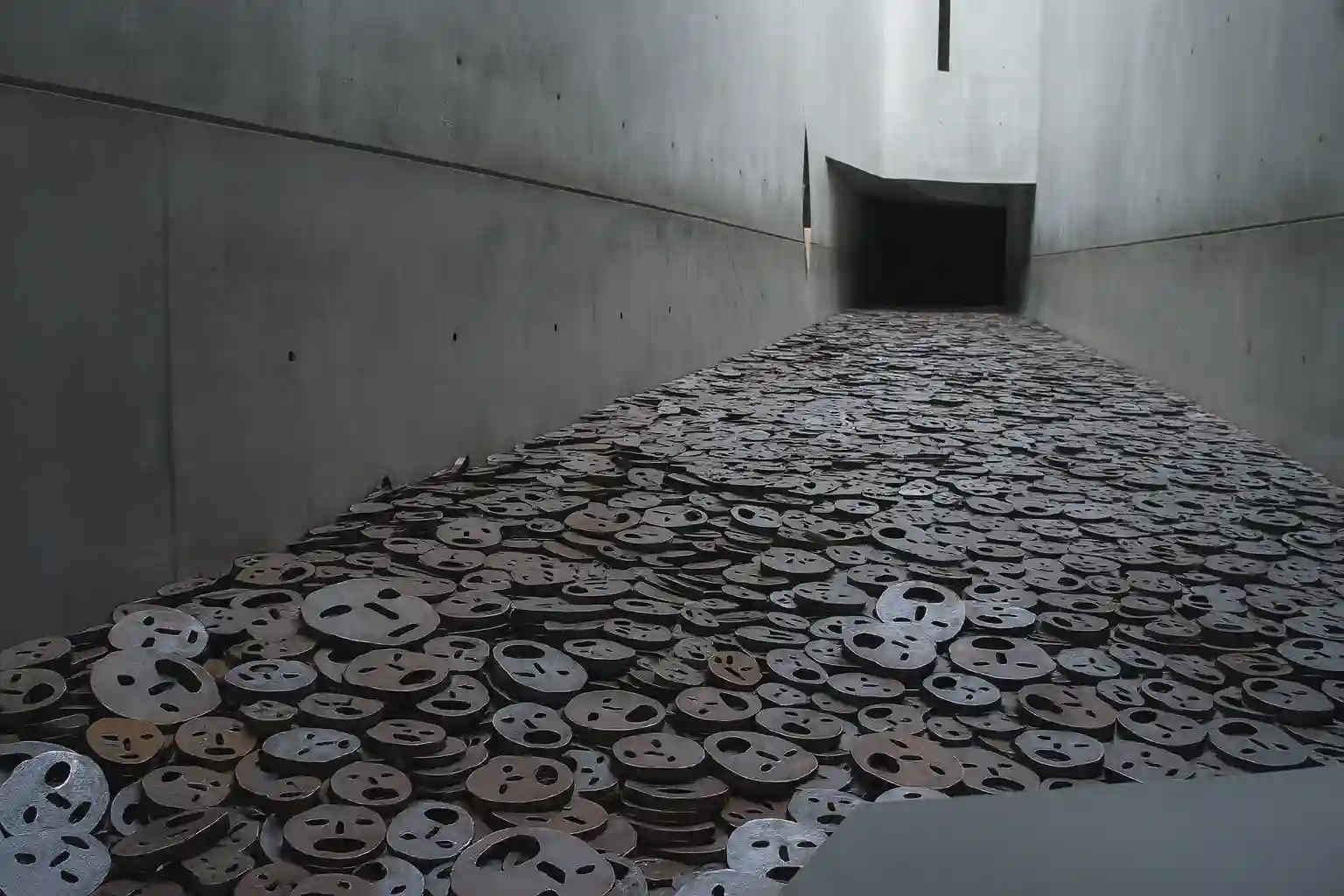Jewish Museum Berlin Entry Ticket
With the Jewish Museum Berlin Entry Ticket, you gain direct access to one of Europe's most renowned museums of Jewish history and culture. Discover the permanent exhibitions, temporary displays, and the iconic architecture by Daniel Libeskind — all with one ticket.

Highlights at the Jewish Museum Berlin
- Libeskind Building: The iconic zigzag architecture symbolizes the ruptures of Jewish-German history.
- Axes of Memory: Walk through corridors representing exile, continuity, and the Holocaust — a powerful spatial experience.
- Fallen Leaves Installation: A haunting floor of over 10,000 iron faces representing innocent victims of violence.
- The Garden of Exile: 49 concrete columns with olive willows on top, symbolizing displacement and disorientation.
- Jewish Life in Germany: The permanent exhibition presents 1,700 years of Jewish history — from the Middle Ages to today.
Architecture & Symbolism: Libeskind’s Vision
The Jewish Museum Berlin is more than just a museum — it is a physical reflection of memory, loss, and hope. Designed by architect Daniel Libeskind, the building’s striking architecture challenges the visitor emotionally and intellectually.
Its iconic zigzag form, often referred to as the “Blitz” or “Zickzack-Gebäude”, is pierced by narrow voids that symbolize the absence left by the Holocaust. These voids are inaccessible spaces — visible but unreachable, expressing the emotional gap in German-Jewish history.
The Garden of Exile features 49 tilted concrete pillars filled with growing olive willows, disorienting the senses and evoking feelings of instability and disconnection — mirroring the experience of exile.
The Holocaust Tower, a cold, isolated concrete shaft, is dimly lit and acoustically sealed. Visitors inside experience a moment of profound silence, solitude, and vulnerability — intended as a space for reflection and confrontation.
Each element of the museum’s architecture tells a story — not through words, but through form, absence, light, and void. Libeskind’s design transforms the building itself into an active part of the historical narrative.
Opening Hours & Ticket Information
Opening Hours
Admission Prices
Ready to Visit?
Secure your timed-entry ticket and skip the queues at one of Berlin's most fascinating museums.
Map: Jewish Museum Berlin & Surrounding Highlights
Discover the historical landscape around the Jewish Museum Berlin — from Cold War landmarks to Holocaust memorials just a short walk away.
Jewish Museum Berlin – Frequently Asked Questions
Why was the museum designed in a zigzag form?
What can visitors expect inside the Holocaust Tower?
What are the “Voids” in the museum?
Is the Garden of Exile open to the public?
Are there special programs for young visitors?
Did you know?
Architect Daniel Libeskind deliberately designed the Jewish Museum Berlin with voids—empty, windowless spaces that cut through the building vertically. These voids represent the irreparable loss of Jewish life and culture during the Holocaust. One of the most powerful examples is the Holocaust Tower: a cold, dark concrete silo with only a sliver of natural light above—offering an emotionally intense, physical experience of absence and isolation. Libeskind’s zigzag structure, often called the “Blitz”, visually breaks with Berlin’s traditional urban layout and tells its own story of rupture, memory, and survival.
Practical Visitor Tips
- Start early – The museum can take 2–3 hours. Arrive before 11:00 AM to experience the voids and Holocaust Tower in relative silence.
- Download the audio guide – Use the official Jewish Museum app for rich background info without having to rent a device.
- Use the side entrance – If there’s a queue at the main entrance (Lindenstraße 9–14), check the entrance at the W. Michael Blumenthal Academy on the left side.
- Visit on a weekday – Tuesdays and Wednesdays are less crowded. Avoid Sundays if you want quiet reflection.
- Don’t rush the “Memory Void” – Many visitors skip it too quickly. Stay a few minutes and walk over the “Fallen Leaves” – it’s one of the most powerful spaces.
- Combine with Berlinische Galerie – It’s right next door and offers an excellent contrast with modern art and architecture.
